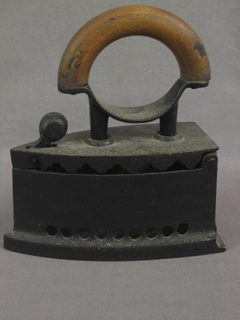Ironing is the use of a heated tool (an iron) to remove wrinkles from clothes. The heating is commonly done to a temperature of 180–220 °Celsius, depending on the fabric. Ironing works by loosening the bonds between the long-chain polymer molecules in the fibres of the cloth. The fibres are straightened by the weight of the iron while the molecules are hot, and they hold their new shape as they cool.
Some fabrics, such as cotton, require the addition of water to loosen the intermolecular bonds. Many modern fabrics (developed in or after the mid-twentieth century) are advertised as needing little or no ironing. Permanent press clothing was developed to reduce the ironing necessary by combining wrinkle-resistant polyester with cotton.
Electric Iron Box
The electric iron was invented in 1882, by Henry W. Seeley. Seeley patented his “electric flatiron” on June 6, 1882 (U.S. Patent no. 259,054). It weighed almost 15 pounds and took a long time to heat. The early electric irons had no easy way to control their temperature, and the first thermostatically controlled electric iron appeared in the 1920s. Later, steam was
used to iron clothing.


Iron Box and its parts

Iron Box – Working principle
The basic principle on which the electric iron works is that when a current is passed through a piece of wire, the wire heats up. Nichrome alloy is used in an Electric Iron as a heating Element . It is an alloy of Nickel and Chromium with 80 % Nickel and 20 % Chromium. It has a high melting Point of 1400 degree Celsius. Nichrome is best known for its heat resistance, as well as its resistance to both corrosion and oxidation, the alloy is incredibly useful for a number of applications such as hair dryers, Water heaters and heat guns etc

This heat is distributed to the sole (base) plate of the electric iron through conduction which is pressed against the clothing to make it wrinkle free.
Thermostat made of Bimetallic stirp inside helps it control the temperature of the base plate. Bimetallic strip consists of a strip of brass in contact with a strip of iron. At normal room temperature, the two strips have the same length. However, since brass expands (or contracts) more than iron when its temperature is raised (or cooled), the bimetallic strip will bend one way or another depending on the temperature being above or below room temperature.

Bimetallic Strip – Watch the Fun !!

